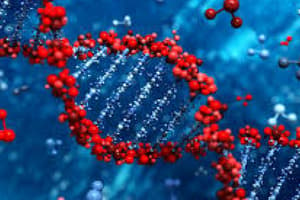Podcast
Questions and Answers
In acute pancreatitis, what is primarily affected by the inflammatory process?
In acute pancreatitis, what is primarily affected by the inflammatory process?
- The acinar cells, zymogen, pancreatic duct, and protective digestive feedback mechanism of the exocrine pancreas (correct)
- The Islets of Langerhans
- The liver's hepatocytes and Kupffer cells
- The gastric parietal cells and chief cells
Which of these is a significant cause of pancreatic auto digestion in acute pancreatitis?
Which of these is a significant cause of pancreatic auto digestion in acute pancreatitis?
- Inadequate intake of dietary fiber
- Excessive alcohol consumption leading to intracellular accumulation of digestive enzymes within the pancreas (correct)
- Decreased production of bile salts
- Overconsumption of glucose rich foods
What is the consequence of increased permeability of ductules in the context of acute pancreatitis?
What is the consequence of increased permeability of ductules in the context of acute pancreatitis?
- Easier movement of enzymes to the parenchyma (correct)
- A more stable pancreatic feedback loop
- Decreased protein secretion from the pancreas
- Reduced enzyme activation within the duct
What initiates the autodigestive process in acute pancreatitis induced by alcohol?
What initiates the autodigestive process in acute pancreatitis induced by alcohol?
Apart from alcohol, which other factor is known to cause acute pancreatitis?
Apart from alcohol, which other factor is known to cause acute pancreatitis?
Which of the following best describes the typical progression of pain in acute pancreatitis?
Which of the following best describes the typical progression of pain in acute pancreatitis?
In addition to patient history and physical examination, which group of laboratory tests is most indicative of inflammation in acute pancreatitis?
In addition to patient history and physical examination, which group of laboratory tests is most indicative of inflammation in acute pancreatitis?
Elevated serum amylase and lipase levels are significant in diagnosing acute pancreatitis because they indicate which of the following?
Elevated serum amylase and lipase levels are significant in diagnosing acute pancreatitis because they indicate which of the following?
If a patient's acute pancreatitis is caused by gallstones, which set of blood tests would most likely show elevated levels, in addition to amylase and lipase?
If a patient's acute pancreatitis is caused by gallstones, which set of blood tests would most likely show elevated levels, in addition to amylase and lipase?
Which of the following is NOT a primary aim in the treatment of acute pancreatitis?
Which of the following is NOT a primary aim in the treatment of acute pancreatitis?
What is the primary initial treatment focus for acute pancreatitis?
What is the primary initial treatment focus for acute pancreatitis?
Which of the following is a key difference between acute and chronic pancreatitis?
Which of the following is a key difference between acute and chronic pancreatitis?
What is the primary cause of chronic pancreatitis in the majority of cases?
What is the primary cause of chronic pancreatitis in the majority of cases?
In chronic pancreatitis, what effect does alcohol have on the pancreas at a cellular level?
In chronic pancreatitis, what effect does alcohol have on the pancreas at a cellular level?
What is a common symptom resulting from the damage to the exocrine pancreas in chronic pancreatitis?
What is a common symptom resulting from the damage to the exocrine pancreas in chronic pancreatitis?
Which diagnostic method is considered the gold standard for chronic pancreatitis?
Which diagnostic method is considered the gold standard for chronic pancreatitis?
What happens to serum amylase and lipase levels in later stages of chronic pancreatitis, compared to in acute pancreatitis?
What happens to serum amylase and lipase levels in later stages of chronic pancreatitis, compared to in acute pancreatitis?
Besides alcohol abuse, what other factor can contribute to chronic pancreatitis?
Besides alcohol abuse, what other factor can contribute to chronic pancreatitis?
What is a consequence of the loss of islet cell function in advanced chronic pancreatitis?
What is a consequence of the loss of islet cell function in advanced chronic pancreatitis?
Which of the following best describes the characteristic pain associated with chronic pancreatitis?
Which of the following best describes the characteristic pain associated with chronic pancreatitis?
Flashcards
Acute Pancreatitis
Acute Pancreatitis
Sudden inflammation of the pancreas caused by injury to acinar cells, zymogens, pancreatic duct, and protective digestive feedback mechanisms.
Acinar Cells
Acinar Cells
The cells that produce and secrete digestive enzymes in the pancreas.
Zymogens
Zymogens
Inactive forms of digestive enzymes stored in the pancreas.
Causes of Acute Pancreatitis
Causes of Acute Pancreatitis
Signup and view all the flashcards
Alcohol's Role in Pancreatitis
Alcohol's Role in Pancreatitis
Signup and view all the flashcards
What is the main symptom of acute pancreatitis?
What is the main symptom of acute pancreatitis?
Signup and view all the flashcards
What is autodigestion in acute pancreatitis?
What is autodigestion in acute pancreatitis?
Signup and view all the flashcards
Why are amylase and lipase levels important in diagnosing acute pancreatitis?
Why are amylase and lipase levels important in diagnosing acute pancreatitis?
Signup and view all the flashcards
What is ESR?
What is ESR?
Signup and view all the flashcards
How are imaging studies used in diagnosing acute pancreatitis?
How are imaging studies used in diagnosing acute pancreatitis?
Signup and view all the flashcards
Severe Pancreatitis
Severe Pancreatitis
Signup and view all the flashcards
Chronic Pancreatitis
Chronic Pancreatitis
Signup and view all the flashcards
Alcohol's Role in Chronic Pancreatitis
Alcohol's Role in Chronic Pancreatitis
Signup and view all the flashcards
Autoimmune Chronic Pancreatitis
Autoimmune Chronic Pancreatitis
Signup and view all the flashcards
ERCP (Endoscopic Retrograde Cholangiopancreatography)
ERCP (Endoscopic Retrograde Cholangiopancreatography)
Signup and view all the flashcards
Steatorrhea
Steatorrhea
Signup and view all the flashcards
Loss of Pancreatic Function
Loss of Pancreatic Function
Signup and view all the flashcards
Insulin-Dependent Diabetes in Chronic Pancreatitis
Insulin-Dependent Diabetes in Chronic Pancreatitis
Signup and view all the flashcards
Abdominal Pain in Chronic Pancreatitis
Abdominal Pain in Chronic Pancreatitis
Signup and view all the flashcards
Recurrent Acute Pancreatitis as a Cause of Chronic Pancreatitis
Recurrent Acute Pancreatitis as a Cause of Chronic Pancreatitis
Signup and view all the flashcards
Study Notes
Acute Pancreatitis
- Definition: Sudden inflammation of the pancreas.
- Causes: Excessive alcohol consumption, gallstones, or unknown (idiopathic).
- Pathophysiology: Alcohol triggers pancreatic autodigestion by increasing digestive enzyme accumulation, premature activation, and release into the pancreatic tissue. This leads to increased permeability of ducts, allowing these enzymes to reach the parenchyma (the functional tissues of the pancreas), and the creation of protein plugs.
- Clinical Manifestations: Upper abdominal pain, often epigastric, radiating to the back, growing in intensity. Nausea, vomiting, anorexia, and diarrhea are also common symptoms.
- Diagnosis: Blood tests (elevated white blood cell count (WBC), erythrocyte sedimentation rate (ESR), C-reactive protein (CRP)); Serum amylase and lipase (elevated in acute pancreatitis); Imaging studies like ultrasound, CT, or MRI.
- Treatment: Eliminating the cause of injury, stopping autodigestion, managing symptoms, preventing systemic complications. IV hydration within first 24 hours, NPO (nothing by mouth), and pain management are key aspects. Mild pancreatitis may be managed with just pain management. Severe cases may require ICU care, and the possibility of shock, renal failure, or multiple organ failure.
Chronic Pancreatitis
- Definition: Ongoing inflammatory process of the pancreas causing irreversible tissue changes.
- Distinguishing feature: Irreversible/significant loss of pancreatic function compared to acute pancreatitis.
- Causes: Chronic alcohol abuse (60-70%), autoimmune conditions (10%), hereditary factors, or recurrent acute pancreatitis (20%).
- Pathophysiology: Alcohol triggers inflammation, leading to pancreatic duct obstruction, ischemia, and acinar cell atrophy and fibrosis. This results in loss of function. Chronic alcohol abuse also contributes to oxidative stress (ROS from alcohol metabolism)
- Clinical Manifestations: Development of disease occurs months to years before symptoms. Severe intermittent abdominal pain (mid or upper right-sided, radiating to back), lasting hours, with unpredictable intervals. As 90% of pancreas may be destroyed, results in malabsorption, diarrhea, steatorrhea (fatty stools), and weight loss.
- Diagnosis: Gold standard is endoscopic retrograde cholangiopancreatography (ERCP). Serum amylase and lipase may be elevated during exacerbations. Fibrotic changes in the pancreas; Loss of exocrine functions (enzymes don't concentrate as effectively); Direct aspiration of pancreatic duct or duodenum with testing of bicarbonate and enzyme levels.
- Treatment: Focuses on healing via pain management, lifestyle changes (alcohol and smoking cessation, healthy diet, exercise) and surgical interventions to correct cysts, obstructions, fistulas, or partial gland resection.
Studying That Suits You
Use AI to generate personalized quizzes and flashcards to suit your learning preferences.




